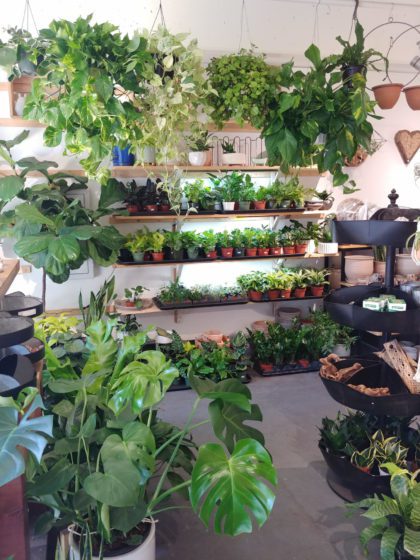A downtown San Jose business incubator and shopping center could be a blueprint for local lawmakers to develop future successful public spaces.
A recent Knight Foundation study found widely applicable lessons learned from Moment, a micro-retail space in San Pedro Square, including how to build community engagement around public spaces, reimagining old and neglected spaces and obtaining funding to develop and maintain new ones.
Moment opened its four micro-retail spaces in 2018 with the help of a Knight Foundation grant. It’s hosted 10 women-owned businesses since then, bringing thousands of shoppers and visitors to the location. The space is part of a larger initiative from the San Jose Downtown Association to develop San Pedro Street and San Pedro Square into a more visitor-friendly area.
The micro-shops at Moment—all just a few hundred square feet in size—are former parking spaces on the bottom level of the San Pedro Square parking garage. Both the San Jose Downtown Association and SJ Made, a local arts and creator’s cooperative, provided input during the design and construction process.
“What (Moment) has done has changed the east side of San Pedro Street from a place you moved through to a place you might want to be and stay,” said Chris Thompson, San Jose director for the Knight Foundation.


Business owner Yuri Kim was part of the inaugural class of shops to open in the new space more than two years ago. She ran her business selling plants, Fractal Florals, with a friend out of their homes starting in 2017. The business later relocated to an office in Japantown, but soon began to grow and need more room.
“It’s every maker’s dream to have a brick and mortar, but obviously it’s extremely time-consuming and expensive,” Kim said. She started with a short, three-month lease to test the waters.
“We learned three months is not enough time, given the money and time you invest, to turn a profit,” Kim said. “We extended our lease one year, and we were doing really well… and so we decided to take over two spaces when the leases turned over for the other space.”
The Knight Foundation study of public spaces focused on four U.S. cities: San Jose, Philadelphia, Akron and Detroit. The study helped researchers craft recommendations for policymakers to know how to build successful public spaces in the future.
Because all the spaces varied in use—from public parks to shopping to nature preserves—the study did not use a uniform set of metrics. Instead, researchers interviewed visitors, nearby business owners, city government leaders and volunteers about their perceptions and use of the study’s chosen public spaces.
Researchers found spaces where the design is aesthetically pleasing and has a historic character relevant to the community are hotbeds of regular activity. Spaces that also offer programs for residents geared towards the arts tend to have more success.
At Moment, the study found that when shops open, they attract a more diverse clientele compared to the rest of San Pedro Square. More seniors and children visit the space, and the split between men and women visitors is even.
“If we think about public spaces like parks or streets or sidewalks … (you have to) design it with the community that is going to be using it in mind,” Thompson said.
“That’s a really important part of a successful public space,” he added. “When (people) run into a dead space like a parking lot or a wall, they stop and they’ll often turn around. But if there are more interesting things to continue to explore, they’ll often continue on their journey.”
Kim said she learned a lot from her two-year stay at Moment, which ended last fall when she expanded and moved to the Rose Garden district. The subsidized rent and heavy foot traffic pre-pandemic helped Kim grow her customer base while she learned how to handle running a brick-and-mortar shop. But there were also drawbacks, including the city’s requirement that each store at Moment be open 60 hours a week.
“Some (business owners) were just solo, doing 60 hours a week, can you imagine?” Kim said. “So that was really startling and alarming because now we had to get employees.”
The hourly requirement reduced to 30 hours once the COVID-19 pandemic hit, Kim said.
In the Knight study, authors acknowledged there’s still a long way to go for projects like Moment to become sustainable. Hurdles include ensuring projects lead to “equitable community development” and creating sustainable operating models that balance the goals of profit and inclusivity at the same time.
To combat those problems, the study advises, municipalities should consider expanded funding and support for staff in these public spaces and regular community involvement. Kim likened it as an educational experience.
“I felt really experienced coming into it,” Kim said. “My business partner and I would used to say that we could have gone to grad school, but this is basically the same amount of work and experience.”
Contact Madelyn Reese at [email protected] or follow @MadelynGReese on Twitter.


Leave a Reply
You must be logged in to post a comment.